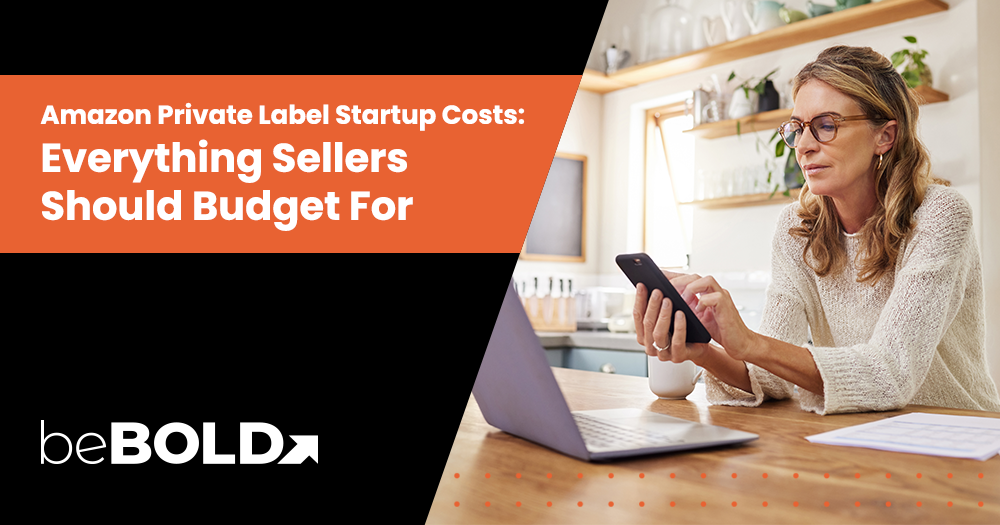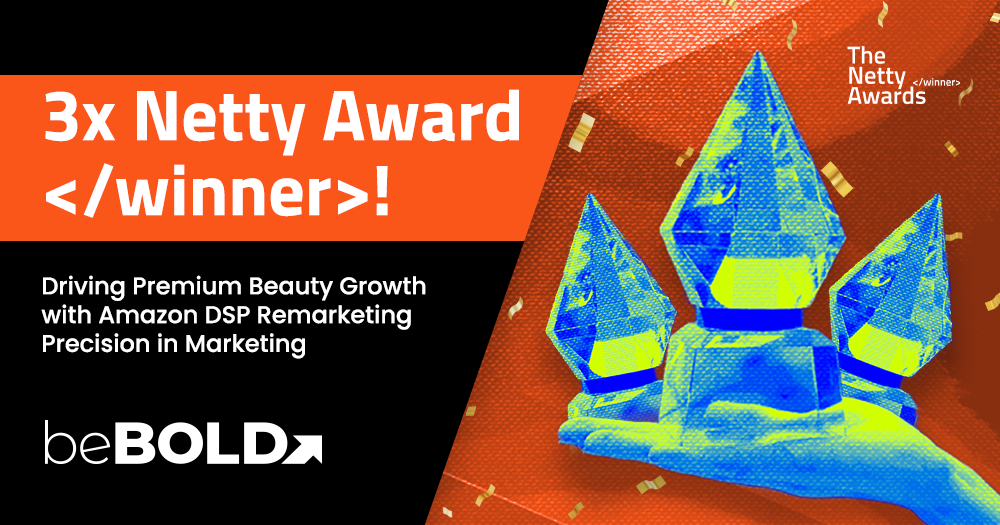Key Summary
- Competitor analysis on Amazon is now a strategic necessity for brand growth. 🚀
- Understanding pricing, keywords, advertising, and customer sentiment helps sellers make smarter, data-driven moves. 📊
- Tools like Helium 10, AMZScout, Atom11, and SellerApp streamline the process and reveal competitive blind spots. 🧠
- Successful analysis isn’t about imitation. It’s about differentiation and positioning your brand as the better choice. 🌟
- beBOLD Digital helps brands turn raw competitive data into actionable, profit-driving strategies. 💼

Source: Adobe Stock
Key Summary
- Competitor analysis on Amazon is now a strategic necessity for brand growth. 🚀
- Understanding pricing, keywords, advertising, and customer sentiment helps sellers make smarter, data-driven moves. 📊
- Tools like Helium 10, AMZScout, Atom11, and SellerApp streamline the process and reveal competitive blind spots. 🧠
- Successful analysis isn’t about imitation. It’s about differentiation and positioning your brand as the better choice. 🌟
- beBOLD Digital helps brands turn raw competitive data into actionable, profit-driving strategies. 💼
The New Reality of Amazon Competition
The Amazon marketplace has evolved into a high-stakes ecosystem where brands are no longer competing only on price. They’re competing on data, visibility, and adaptability. With over 9 million sellers and new entrants every day, the brands that win are the ones that treat Amazon competitor analysis as an ongoing, proactive discipline rather than a one-time research project.
At its core, Amazon seller competitor analysis is about clarity. It reveals where your competitors are outperforming, where they’re vulnerable, and where your brand can win sustainably. And in 2025, that insight is worth more than any single campaign or keyword. It’s now the foundation of long-term growth.
Why Competitor Analysis Is the New Non-Negotiable
Success on Amazon used to be about great listings and competitive prices. Today, it’s about precision decisions. Competitor analysis gives sellers the intelligence to make those calls. When done right, it answers key strategic questions:
- Which brands are dominating your niche, and why?
- What keywords are driving their sales momentum?
- Where are they overspending on ads, and where are they missing opportunities?
- What recurring customer complaints can your brand solve better?
In short, competitor analysis gives you visibility into the invisible. It helps brands shift from reactive to predictive marketing, anticipating trends instead of chasing them.
Core Elements of a Smart Amazon Competitor Analysis

Source: Adobe Stock
Let’s break down the key pillars every Amazon seller should track. Each element not only highlights what your competitors are doing, but also reveals what you should do next.
1. Product Listings: The Digital Storefront
Your competitors’ listings reveal their storytelling strategy. Study how they use visuals, copy, and formatting to communicate value.
What to look for:
- Title structure and keyword use
- Bullet point clarity and tone
- A+ content design, lifestyle images, and comparison charts
beBOLD Digital Pro Tip:
Audit your top five competitors’ listings quarterly. Identify patterns in imagery, formatting, and copy that attract clicks. After you check all these details, draft your own listings to be more persuasive, not just similar. It’s not about copying – it’s about comparing and executing it with smarter moves.
2. Keyword Strategy: The SEO Battlefront
Amazon SEO is fueled by keywords. Competitive keyword analysis reveals which search terms drive visibility and conversions.
What to look for:
- Keywords competitors rank for organically
- High-volume keywords missing from your listings
- PPC terms competitors bid heavily on
beBOLD Digital Pro Tip:
Use tools like Helium 10’s Cerebro or AMZScout’s Reverse ASIN Lookup to uncover hidden keyword opportunities. Then, build your keyword hierarchy around search intent, not just volume.
3. Pricing and Promotions: The Profit Lever
Pricing is both a science and a signal. It communicates your brand’s market position, whether you’re positioned as premium, value, or discount.
What to look for:
- Pricing fluctuations over time
- Competitor discount patterns during seasonal peaks
- Bundling or coupon usage
beBOLD Digital Pro Tip:
Avoid racing to the bottom. Instead, use pricing analytics to identify the sweet spot – where your perceived value and profitability align. Brands that lead with value differentiation always outperform those that compete solely on price.
4. Advertising & Visibility: Where Money Meets Momentum
Sponsored Products, Sponsored Brands, and Display Ads are the competitive battlegrounds of Amazon visibility. Your rivals’ ad footprints can expose their strategic priorities.
What to look for:
- Which competitors dominate Sponsored placements
- The frequency and timing of their ads
- What messaging or visuals they emphasize
beBOLD Digital Pro Tip:
Analyze the top three advertisers in your niche using tools like Atom11 or SellerApp. Identify gaps in their coverage, like unclaimed long-tail keywords, and position your campaigns to fill them.
5. Reviews & Customer Insights: The Goldmine of Truth
Customer feedback reveals both the strengths and weaknesses of your competitors. It’s direct intelligence from the market.
What to look for:
- Common complaints or pain points
- Product flaws mentioned repeatedly
- Unmet expectations (e.g., packaging, quality, delivery speed)
beBOLD Digital Pro Tip:
Create a "Review Insights Tracker." Categorize competitor reviews into themes like quality, usability, packaging, and support. Use this data to improve your product and rewrite listings that directly address those buyer concerns.
6. Off-Amazon Branding: The Hidden Influence
Strong brands extend their influence beyond Amazon. Social media activity, influencer campaigns, and website messaging all reinforce trust signals that impact conversions.
What to look for:
- Cross-platform engagement (Instagram, TikTok, YouTube)
- Consistent brand tone and design
- Content collaborations or user-generated content
beBOLD Digital Pro Tip:
Audit your competitors’ off-Amazon footprint quarterly. If they’re building community while you’re focusing only on listings, you’re playing defense. Integrate Amazon SEO with broader digital storytelling for full-funnel dominance.
How to Find Your Competitors on Amazon

Before analyzing competitors, you need to identify them correctly. Amazon’s search algorithm and category structures make this straightforward, if you know where to look.
- Search by Primary Keywords
Start by typing your main product keywords, like “organic dog shampoo”, into Amazon’s search bar. Focus on the first two pages of results. These are your strongest competitors. Ignore sponsored listings initially to capture organic competitors who rank based on SEO and conversion, not ad spend. - Check “Customers Also Bought” and “Similar Items”
Amazon’s AI automatically recommends competing products on each listing page. These sections reveal both direct and indirect competitors who share your customer base. - Analyze Category Best Sellers
Navigate to your product’s subcategory (e.g., Pet Supplies > Grooming > Shampoos) and note the Top 10 Best Sellers. This list shows who’s dominating your niche in volume and reviews. - Use ASIN Tracking Tools
Platforms like Helium 10’s Market Tracker 360 or AMZScout PRO can help you discover competitors by ASIN. These tools automatically cluster listings selling similar items and reveal their performance, pricing, and keyword overlap. - Identify Emerging Competitors
Check for new listings with fast-rising reviews or “Amazon’s Choice” badges. These brands are often emerging threats that gain traction quickly.
What Our beBOLD Digital Experts Recommend:
Create a competitor log that categorizes rivals into direct competitors (same product type and price tier) and indirect competitors (alternative solutions or adjacent categories). This helps prioritize your focus and uncover hidden competition.
Useful Tools That Give Amazon Sellers an Edge

Modern Amazon success depends on insights, not instinct. These tools simplify the complex and make competitive intelligence accessible to any brand:
- Helium 10: Keyword tracking, market share analysis, and Listing Analyzer for performance benchmarking.
- AMZScout: Real-time pricing, sales history, and keyword visibility reports.
- Atom11: End-to-end PPC optimization and competitor visibility tracking.
- SellerApp: Listing Quality Index and keyword rank tracking with visual dashboards.
- SellerSonar: Automated competitor monitoring, Buy Box alerts, and review tracking.
Use at least two tools in tandem: one for SEO data and one for pricing and ad analytics. Cross-verifying insights minimizes bias and produces more reliable strategies.
The beBOLD Digital Edge: Turning Data into Strategy
Most sellers collect data—but few know how to translate it into real business strategy. At beBOLD Digital, our competitive intelligence process doesn’t stop at observation; it focuses on execution and optimization. We believe that insights are only valuable when they lead to measurable action.
Our Amazon strategists merge human creativity with machine intelligence to turn competitive data into growth systems that scale. We analyze not just what competitors are doing, but why it works – then adapt those findings into your brand’s own strategic framework.
Here’s how we do it:
- Identify and Prioritize Threats: We monitor the top competitors in your niche, assessing their ad spend, keyword dominance, and review sentiment to uncover your biggest risks—and hidden openings.
- Develop Smarter Content Strategies: Every listing we optimize is built to outperform competitors’ tone, structure, and visual hierarchy while maintaining your unique brand identity.
- Reallocate Ad Budgets Intelligently: Using data from platforms like Helium 10, Atom11, and SellerApp, we pinpoint where your competitors’ PPC campaigns fall short and shift your budget toward untapped, high-ROI opportunities.
- Optimize Pricing and Profitability: Through ongoing pricing analysis, we help balance conversion growth with profitability, positioning your product to win the Buy Box without undercutting value.
- Predict and Adapt: Our systems don’t just react. They predict shifts in the market. As algorithms change, so does your strategy, ensuring continuous relevance and growth.
This comprehensive approach transforms competitor analysis from a static report into a dynamic, evolving playbook for growth. It’s how we turn competitive insights into a tangible competitive advantage.
Compete Smarter, Not Louder With beBOLD Digital
In the hyper-competitive world of Amazon, the winners aren’t always the loudest brands. They’re the ones who listen the best. They study the market, interpret the signals, and act with precision.
Amazon Seller Competitor Analysis is your roadmap to that kind of clarity. It bridges the gap between guessing and knowing, between reacting and leading. And when executed with discipline, it transforms not just your listings, but your entire business outlook. If you want to outpace your competitors with data-driven clarity, beBOLD Digital can help. From advanced Amazon SEO to full-funnel competitor analysis, our team crafts strategies that turn insight into measurable growth. Contact beBOLD Digital today and unlock your next stage of Amazon performance.
Frequently Asked Questions (FAQ)
1. How to do competitor analysis on Amazon?
Start by identifying top competitors through keyword searches, best-seller lists, and ASIN-tracking tools. Analyze their product listings, pricing, keywords, advertising strategies, and customer feedback. Use this data to refine your own listings, improve targeting, and identify untapped opportunities.
2. What percentage of Amazon sellers are successful?
Research shows that roughly 45–65% of Amazon sellers are profitable within their first year, while the top 10% achieve sustained growth through data-driven strategies and ongoing optimization. Success often depends on effective competitor analysis and long-term branding efforts.
3. What are the 4 P's of competitor analysis?
The 4 P’s—Product, Price, Promotion, and Place—are essential pillars for understanding your competitive landscape. They help sellers evaluate how products are positioned, priced, marketed, and distributed relative to competitors.
4. What is competitive price on Amazon seller?
A competitive price balances profitability with visibility. It’s the price point where your product ranks well, wins the Buy Box, and aligns with customer expectations without eroding margins. Use pricing analytics tools to track market trends and maintain that balance.
5. What are common competitor analysis mistakes?
Common mistakes include copying competitors instead of differentiating, focusing only on pricing, ignoring customer sentiment, and failing to monitor changes consistently. Competitor analysis should inspire innovation, not imitation.
6. What is a SWOT analysis for competitors?
A SWOT analysis evaluates competitors’ Strengths, Weaknesses, Opportunities, and Threats. It helps identify what they do well, where they fall short, emerging opportunities you can seize, and potential risks to anticipate.









Comments